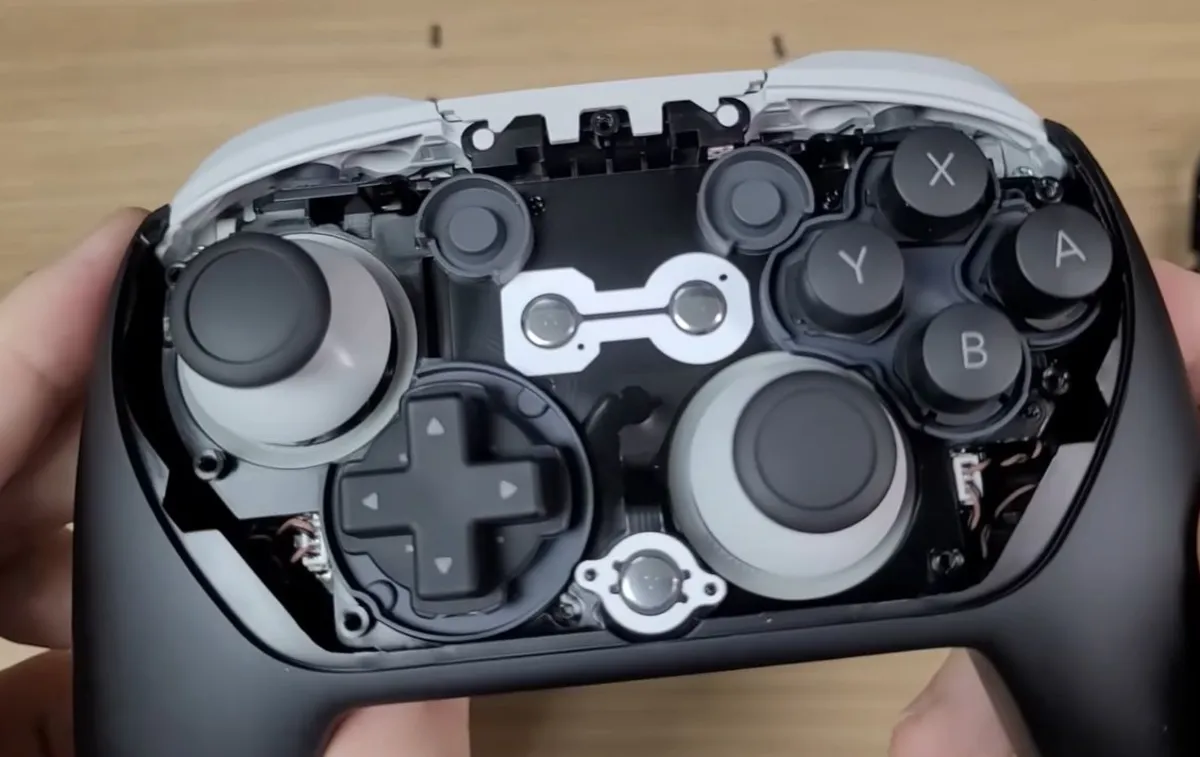
For gamers and tech enthusiasts who have experience with SNES and GameCube controllers, the simplicity of these devices is well-remembered. However, as the landscape of gaming evolves, so does the complexity of modern game controllers. Nintendo's new Switch 2 Pro controller is challenging the status quo established by contemporary Xbox and PlayStation controllers when it comes to repairability. A recent teardown conducted by VK on YouTube provides an eye-opening look at the inner workings of this new controller, revealing some surprising challenges for users who might want to perform their own repairs.
The teardown begins with a disappointing revelation: the front plate of the controller is glued on, making the initial step of disassembly a frustrating one for repair-minded individuals. Following the removal of this adhesive front plate, users are confronted with thin plastic components, fragile ribbon cables, and a multitude of screws that must be navigated carefully during the teardown process.
At the heart of the Switch 2 Pro controller is the main controller integrated circuit (IC), which features an ARM-based MediaTek MT3689BCA Bluetooth SoC. This chip is also utilized in the Switch 2’s Joy-Cons, indicating a shared technology across Nintendo's latest hardware. Powering this controller is a 3.87V, 1070 mAh lithium-ion battery. While it is connected to the PCB via a connector, accessing it for a battery replacement can turn into a cumbersome task, further complicating the repair process.
One of the standout features of the Switch 2 Pro controller is its analog sticks, which are branded by Alps. Unfortunately, these sticks do not seem to match any currently available models on the market, which could pose a challenge for replacements. Disappointingly, they continue to utilize resistive potentiometer technology, a design choice that could lead to premature stick drift issues, necessitating replacements sooner than gamers might hope.
Reassembling the controller after performing any maintenance comes with its own set of challenges. The two analog sticks are not identical, making it easy to swap them accidentally during reassembly. This oversight would require users to go through the disassembly process a second time, further complicating what should be a straightforward repair.
The Switch 2 Pro controller features a soft-touch coating, which, while pleasant to the touch, has been known to accumulate grime over time. The long-term durability of this coating remains to be seen, and users will need to consider the potential for maintenance as the controller ages. As is standard with many Nintendo controllers, this model is designed exclusively for the Switch and does not support compatibility with PCs or other gaming consoles.
In summary, the Nintendo Switch 2 Pro controller presents itself as a sleek and silent option for gamers. However, the findings from the teardown suggest that its repairability is disappointingly low. For those who value easy maintenance and longevity in their gaming peripherals, this complexity may be a significant drawback worth considering before making a purchase.